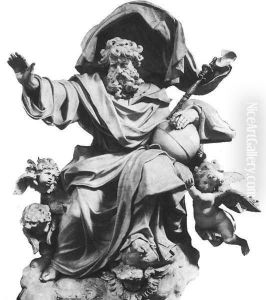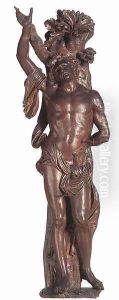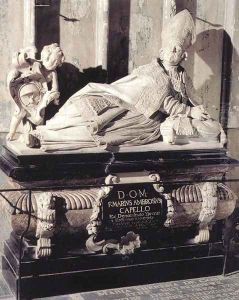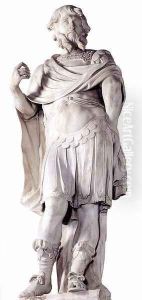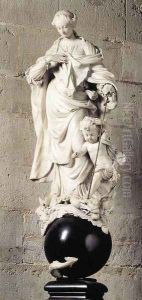Artus Quellin II Paintings
Artus Quellinus the Younger, often referred to as Artus Quellin II to distinguish him from his more famous uncle, Artus Quellinus the Elder, was a notable Flemish sculptor born in 1625 in Antwerp, then part of the Spanish Netherlands. Despite being overshadowed by his uncle, Artus Quellin II developed a distinctive style that contributed significantly to the Baroque sculpture in Northern Europe. His family was deeply entrenched in the arts, providing a fertile ground for his talents to flourish from a young age.
Artus Quellin II's career was marked by a blend of traditional Flemish elements and the emerging Baroque sensibility, characterized by dynamic movement, emotional expression, and detailed realism. He was particularly adept at religious sculptures, creating numerous altarpieces, pulpits, and statues for churches in the Southern Netherlands and beyond. His works are noted for their intricate detail, expressive figures, and the skillful use of marble and wood.
Unlike his uncle, who spent a significant part of his career in Amsterdam, contributing to the decoration of the Amsterdam City Hall (now the Royal Palace), Artus II primarily worked in Antwerp and its surroundings. However, his reputation earned him commissions from across Europe, indicating his influence extended well beyond his immediate geographic area.
Artus Quellin II's contribution to Baroque sculpture is significant, though his works are often overshadowed by those of contemporary artists like Gian Lorenzo Bernini in Italy. Nevertheless, his sculptures remain an important part of the artistic heritage of the Low Countries, reflecting the rich cultural and religious life of the 17th century. He passed away in 1700, leaving behind a legacy that, while perhaps not as widely recognized as that of his uncle, is deeply appreciated by connoisseurs of Baroque art.
